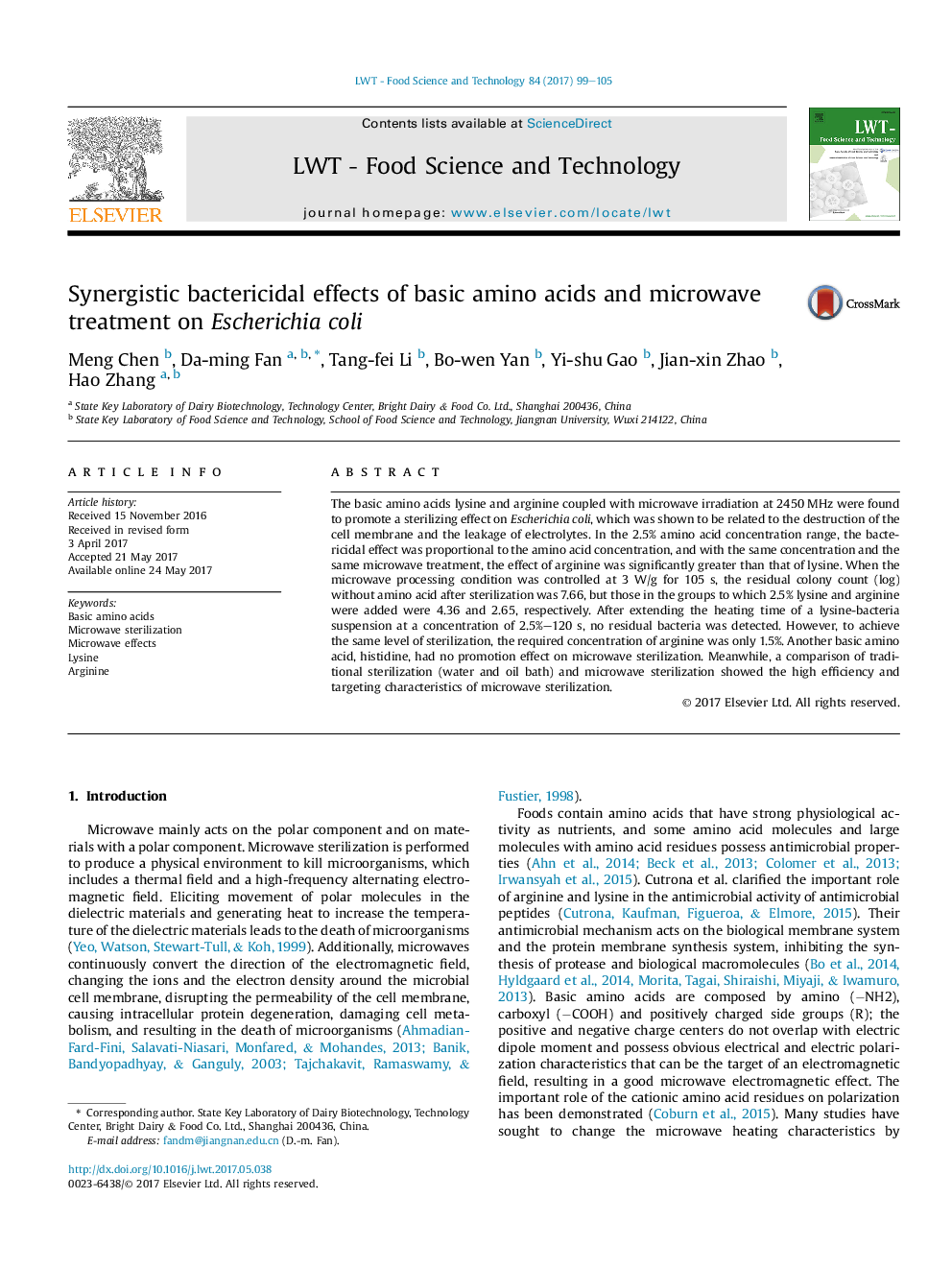| Article ID | Journal | Published Year | Pages | File Type |
|---|---|---|---|---|
| 5768919 | LWT - Food Science and Technology | 2017 | 7 Pages |
â¢Arg and Lys could significantly improve the inactivation of E. coli by microwave.â¢Compared with water or oil bath, microwave sterilization showed high efficiency.â¢Arginine/lysine and microwave had synergistic bactericidal effects.â¢Synergistic bactericidal effect was related to the destruction of the cell membrane.
The basic amino acids lysine and arginine coupled with microwave irradiation at 2450Â MHz were found to promote a sterilizing effect on Escherichia coli, which was shown to be related to the destruction of the cell membrane and the leakage of electrolytes. In the 2.5% amino acid concentration range, the bactericidal effect was proportional to the amino acid concentration, and with the same concentration and the same microwave treatment, the effect of arginine was significantly greater than that of lysine. When the microwave processing condition was controlled at 3Â W/g for 105Â s, the residual colony count (log) without amino acid after sterilization was 7.66, but those in the groups to which 2.5% lysine and arginine were added were 4.36 and 2.65, respectively. After extending the heating time of a lysine-bacteria suspension at a concentration of 2.5%-120Â s, no residual bacteria was detected. However, to achieve the same level of sterilization, the required concentration of arginine was only 1.5%. Another basic amino acid, histidine, had no promotion effect on microwave sterilization. Meanwhile, a comparison of traditional sterilization (water and oil bath) and microwave sterilization showed the high efficiency and targeting characteristics of microwave sterilization.
